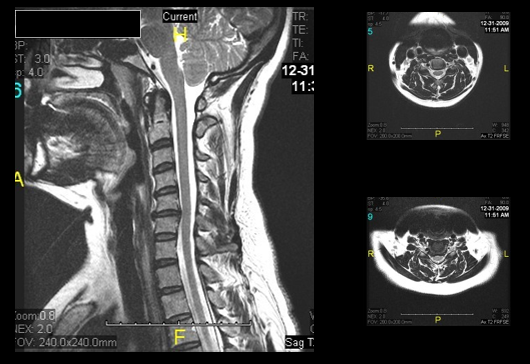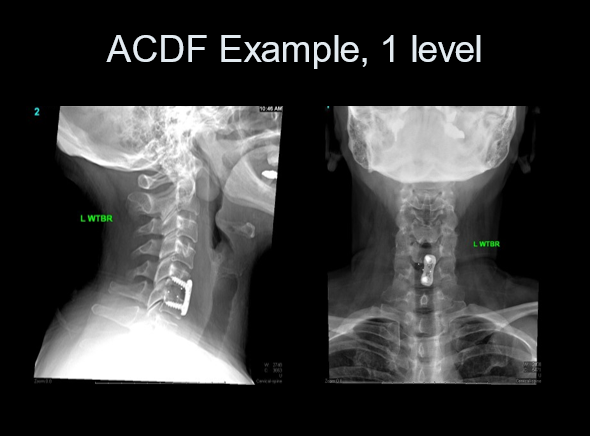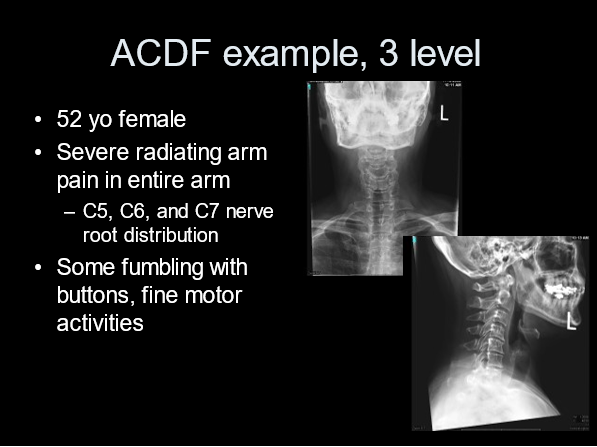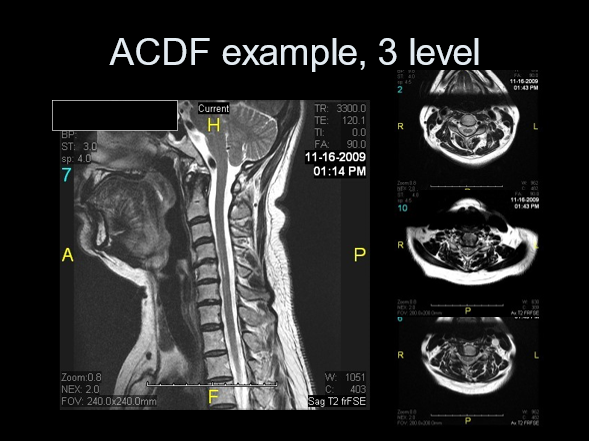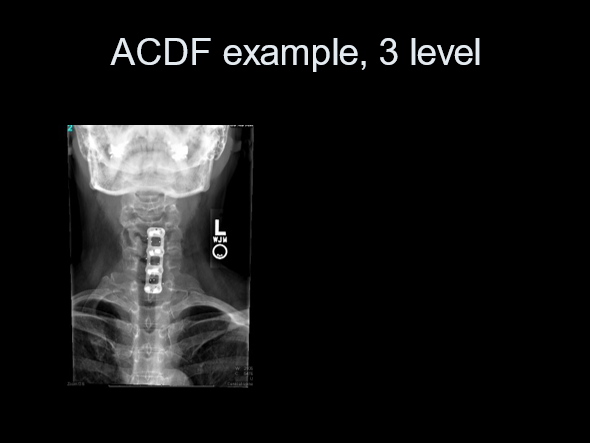Anterior cervical discectomy and fusion (ACDF) is a surgical procedure that involves removing a damaged or herniated spinal disc in the neck region. Because an anterior approach is used, the surgeon accesses the spinal column through an incision in the front of the neck. Below, we take a closer look at why this surgery may be necessary how the procedure is performed.
Why Is An ACDF Surgery Performed?
An ACDF is performed to help address pain and or weakness due to a degenerated or herniated spinal disc in the cervical spine. However, surgery isn’t typically the first course of treatment for patients showing signs of disc herniation or degeneration. In most instances, conservative options will be pursued for a minimum of six weeks before an operation is considered. Nonsurgical treatment options include a combination of physical therapy, controlled strength training exercise, anti-inflammatory medication, corticosteroid injections and rest. Commonly, patients see enough symptom relief through conservative care that surgery does not need to be pursued.
If conservative options fail to provide relief, surgery may be considered if symptoms are causing moderate to severe discomfort. Some symptoms that may suggest you could benefit from ACDF include:
- Hand or arm weakness
- Arm pain
- Loss of grip strength
- Limited range of motion in the neck
- Shooting pain in the shoulders, arms and hands
- Numbness
The goal of surgery is to open up (decompress) the space for the nerves and eliminate the motion of a severely degenerative or unstable level.
The ACDF Procedure
Anterior cervical discectomy & fusion takes anywhere from one to three hours to complete depending on the number of spine levels treated and the severity of the condition. Surgery begins with the patient lying on their back on the operating table. The anesthesiologist will administer anesthesia and you will be asleep during the procedure. Your neck region will be cleaned with a sterilizing solution and surgical drapes applied.
The surgeon will begin by making a small 1-to-2-inch incision on the left side of your neck following a natural crease (we all have them). The surgeon then carefully maneuvers muscles and other tissues out of the way to clearly visualize the front of spine. The problemed disc is then located with the aid of a fluoroscope (specialized x-ray) and the neighboring vertebrae bones are gently retracted to provide a larger opening to access the injured disc.
Using special tools and a microscope, the damaged disc is removed along with any offending bone spurs. The spinal foramen (an opening through which spinal nerves pass) is then widened to ensure easy passage for the nerves as the exit the spinal canal. To replace the disc and maintain the height between the vertebrae, a block shaped spacer is sized and placed into what was the disc space. It may be made of either a dense plastic or titanium – materials chosen because they have a similar compressibility to bone. The implants are held in place with either small screws through the implant and into the bone or with a thin plate and screws placed along the front of the spine. The bone grows through and around these implants to accomplish the fusion. An x-ray is taken to ensure the graft, plate and screws are positioned correctly.
Once the surgeon is satisfied with the position of the graft and hardware, the surgical retractor is removed and muscles and soft tissues return back to their natural position. The incision site is then closed, dressings applied, and the patient awakened from anesthesia and taken to the recovery room. Many patients are comfortable after surgery and able to go home with family or support the same day.
1 Level ACDF Surgery Example

One Level ACDF for Single Level Pathology 
Pre-Operative MRI, C5-6 level 
Post-Operative, Single Level ACDF C5-6
3 Level ACDF Surgery Example

3 Level Cervical Disc Disease 
3 Level Cervical Disc Disease 
3 Level Cervical Disc Disease
ACDF Surgery Recovery
Because surgery was performed from the front of the neck, most patients have a sore throat, raspy voice, and some achiness with swallowing for the first week after surgery. The back of the neck can be sore in the muscles. A soft collar can be used for comfort – rarely, a collar is requested to be used by the surgeon to provide additional support to the spine. Pain from the impinged nerves usually improves quickly after surgery. If weakness was present, it can take time for the nerves to reach the muscles and the muscles to strengthen. Neck pain improves as the fusing bone solidifies. Although it takes a full year for the bone between vertebrae to fully solidify, most patients have a marked and steady improvement in post-operative neck pain over the first month or so.
Studies have demonstrated a patient satisfaction rate of >95% after an anterior cervical discectomy and fusion procedure.
For more information about neck and arm pain and to review the varied treatment options, reach out to Dr. Jackman and his team today.

